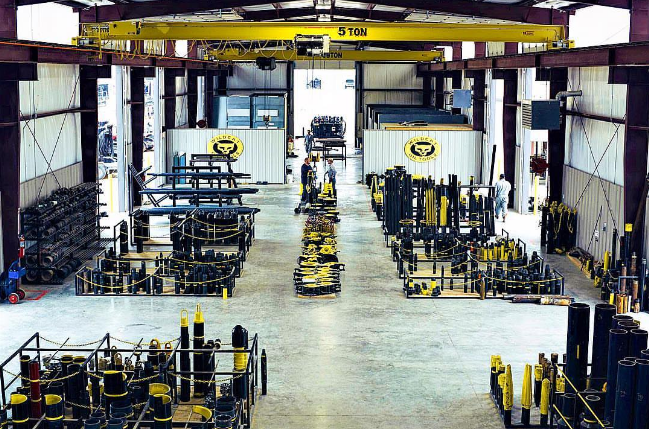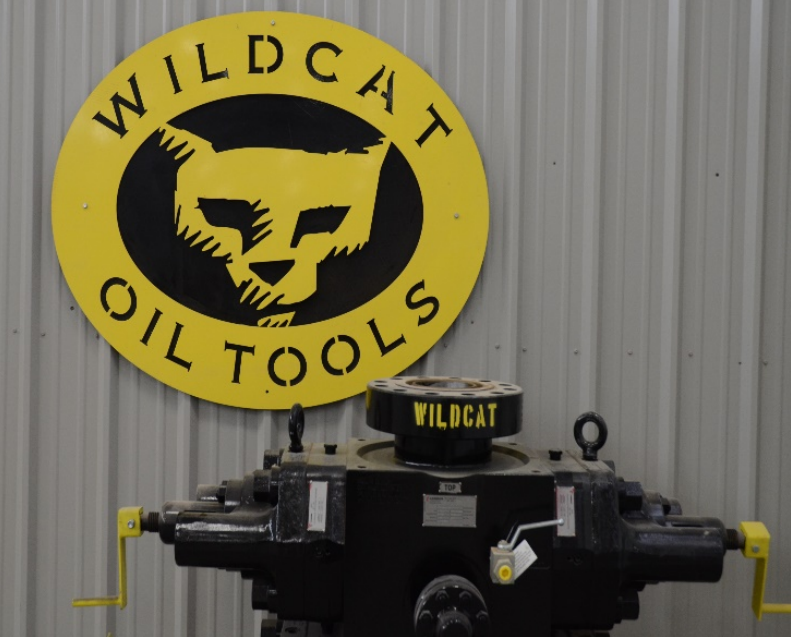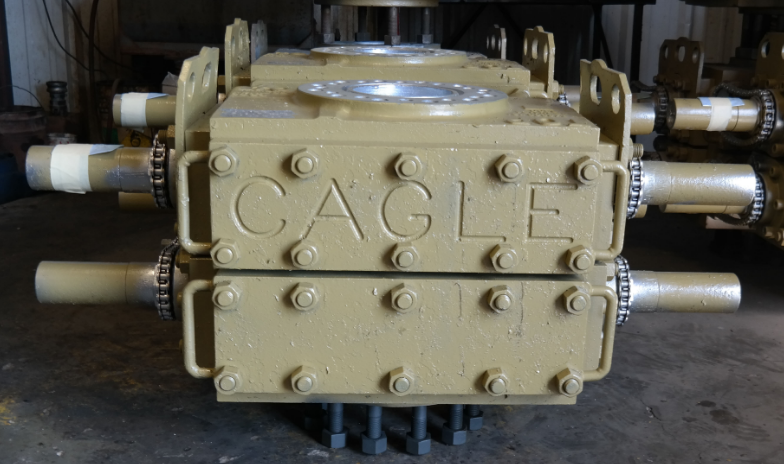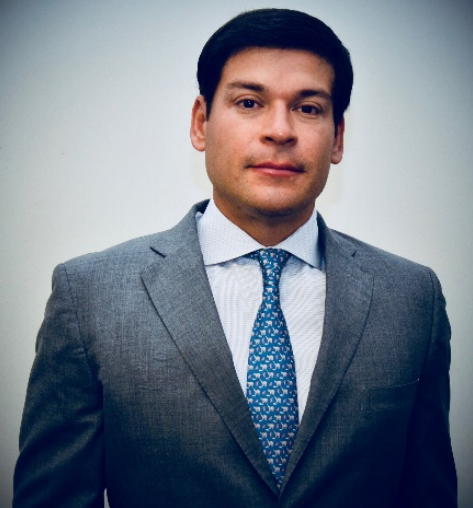The oil tools sector relies on old school and new tech to ride the Permian wave.
By Paul Wiseman
How do you mix new technology with old-school values to stay abreast of customers’ ever-changing operations?
This sharing of knowledge boosts teamwork in ways not possible before.
Two Permian-based downhole tools companies are using different approaches to do just that.
For longtime Odessa firm Cagle Fishing and Rental, LTD, new technology centers on better internal communication and information. The company opened for business in 1972 and now has offices in Odessa, Big Lake, and Andrews.
Odessa Manager Randy Adams says technology has put much more knowledge at their fingertips in two ways.
First, there’s “The technology of being able to get information fast,” he said. “In our field of work, you may be working on something one day,” and not do that job again for a while. “And you may… be running a tool you may not run again for two years.
“Years ago, we had 14 million books in our truck,” he recalled with a laugh, which took some time to sort through. Since around 2000, all that paper has morphed into soft copies stored on a hard drive. Even that change was gradual, as the earliest soft copies were too big to fit onto a hard drive. Keeping up with collections of memory sticks and later, external hard drives were the norm—but still much better than dragging huge reference books around, especially onto offshore platforms.
“Now, of course, with the telephones the way they are, if you have time, you can go to the internet,” to e-books, so that a simple Google search can quickly bring up a host of possible answers.
And while a homeowner can quickly find a video on replacing a faucet, Adams says videos are scarce on fishing tool topics. Only a few of the larger service companies have budgets for that.
They employ design software to adapt tools to the requirements of longer laterals.
The second benefit of technology also revolves around the phone, but less on the Google side. Before signing on with Cagle, Adams spent several years in the Middle East with a major service company, where he met a host of experts and gained extensive knowledge himself.
Those people are now just a phone call away, wherever they are. “If I run across something I haven’t seen, I’ve got guys all over the world I can pick up and call. And the way the technology is, you’re not calling for four or five days before you get an answer,” he said.
In Adams’s view, this sharing of knowledge boosts teamwork in ways not possible before. But not all companies may take full advantage of this shared knowledge. In some companies, he said, “One guy won’t tell the other guy anything because he’s afraid [the other guy] is going to take his job. Here (at Cagle), I don’t want to TKTKTKTKTKTK somebody that doesn’t want my job.”
“As far as the tools themselves, they haven’t changed a whole lot. If it ain’t broke, don’t fix it,” he said.
Midland’s Wildcat Oil Tools takes communication technology a step further—into advanced tool design. Explains founder, chairman, and CEO Aron Marquez, “We try to incorporate information systems into our technology. To make, for example, our express drill whipstock, our anchors are completely different from what’s on the market—the mill, the valves—we try to incorporate technology to our valves.”
“When people know that you’re from the Permian Basin… the door is open “for doing business.” —Marquez
They employ design software to adapt tools to the requirements of longer laterals.
This can include improved functionality and new designs in composition. Marquez explains, “The frac plug we’re getting ready to release, we focused a lot on trying to drill that plug where it held the [higher] pressures [in longer laterals]. We used no metals, it was 100 percent composite. It drills out in a matter of minutes. We designed a specific mill for that. Now you’re dealing with higher temperatures, with longer laterals—the whole thing has changed. Tech has to match change in well designs—depths, laterals, tubing, formations.”
Communication is also key here, among designers and also with customers. That lets Wildcat’s designers add improvements that are line with the ever-evolving needs of end users.
Wildcat’s design team also works to make valves and other parts consistent between tools to reduce the learning curve for clients.
This plan has worked well for the company founded in 2012. From a small start in Odessa, “It’s grown substantially. We have a couple of locations in Oklahoma—McAlester and Oklahoma City—in Carmichael, Pennsylvania, and two locations in Houston.” Houston’s sites include a technology center that houses product design and testing teams and a site that houses a number of corporate executives. The company is beginning to offer whipstock business in Kuwait and other work in Colombia’s onshore market.
Cagle’s work is mostly stronger than during the bust.
Somewhat the reverse of most oilfield companies, Wildcat’s corporate headquarters is in Midland, for a reason. “It’s amazing, whenever you travel outside the Permian Basin—whether it’s in the lower 48 or South America or the Middle East—when people know that you’re from the Permian Basin… the door is open” for doing business,” Marquez explains.
“The Permian—we’re blessed to be in this area where the lifting costs are considerably lower than everywhere else.”
Marquez said he founded the company in the Permian because of the region’s wealth of experience and loyal clients. With the goal of using that experience to improve on the composition and functionality of oil tools, Marquez was eager to tap into that living database.
Both companies report strong business since 2017. Adams noted that Cagle’s work is mostly stronger than during the bust. “It’s still a bit of a roller coaster,” he said. “You’ll be busy for a month or two, then you’ll catch a few days when you’re not doing much. The thing we’re seeing is trying to get people that are competent to get them to do what you need them to do,” realizing that the ones they have hired are fully competent. Adams said they were looking for about three more employees to add to their staff of about 30 across their three locations.
“The downturn… made us all a little bit more humble and a little bit more resourceful.” —Marquez
For Wildcat’s Marquez, “All our locations stay sold out. We’ve added a lot of equipment, we’ve hired a lot of people. We’re very fortunate to stay sold out.”
“We’re a privately owned company, which makes it a little bit easier when people call me and say, ‘Hey, I’ve got a project for you to look at.’ I don’t have to get a board to approve us going down there. It’s just me and our partners so we can go there and make a decision.
“On other services, we have technology, like our whipstock. We’re releasing a frac plug here in the next couple of weeks, we’re releasing all this different technology, you that’s stuff TKTKTKTKTKTK that we can sell all over the world. But the heavier stuff, the pumps, your fishing, the whips and all that, we have a core group of customers for whom that’s our number one priority,” he said.
For Wildcat the recent downturn, while painful, created an opportunity for reflection. Says Marquez, “I think that the downturn that we experienced in 2016 made us all a little bit more humble and a little bit more resourceful. You want to operate to where things are more efficient, safer, and more economical whether the market’s good or bad.”
As in most phases of the oil industry, companies that survive a recession often emerge from it leaner and more efficient and ready for the inevitable boom cycle to follow.
Paul Wiseman is a freelance writer in Midland.














